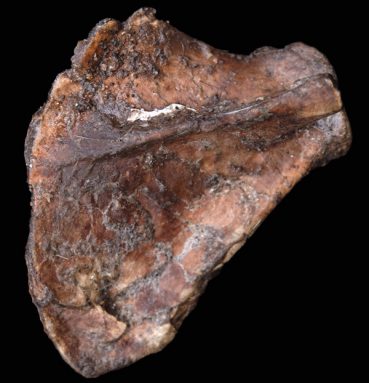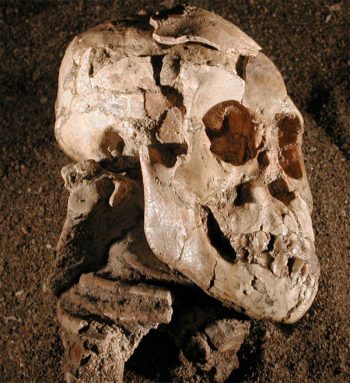Shoulder bones fuel debate
Fossil shoulder blades suggest an ancient humanlike species may have been at home in the trees as well as on the ground
Share this:
- Share via email (Opens in new window) Email
- Click to share on Facebook (Opens in new window) Facebook
- Click to share on X (Opens in new window) X
- Click to share on Pinterest (Opens in new window) Pinterest
- Click to share on Reddit (Opens in new window) Reddit
- Share to Google Classroom (Opens in new window) Google Classroom
- Click to print (Opens in new window) Print

Shoulder blades are the triangular bones that stick out of your back like small wings. Also known as scapulas, they connect different parts of the body. Without these bones, you couldn’t climb a tree. The surprising presence of them in a now-extinct humanlike species suggests it may have been a tree climber.
Many species have scapulas, although their shapes and sizes can differ. In a new study, scientists took a close look at the fossilized shoulder blades of a 3-year-old, humanlike species that lived 3 million to 4 million years ago. Nicknamed Selam by her discoverers, this individual belonged to a long-gone species known as Australopithecus afarensis (AW-stral-oh-PITH-i kus AF-a-REN-sis).
Selam’s shoulder blades resemble those from an ape. That connection led the researchers to conclude that this ancient species both climbed trees and walked on the ground. That conclusion reignites a controversy: Scientists disagree about whether this species lived only on the ground or could climb trees as well. The disagreement has been ongoing for more than 30 years, since another member of the same species — an individual nicknamed Lucy — was discovered in Ethiopia in 1974.
Paleontologist David Green of Midwestern University in Downers Grove, Ill., and anthropologist Zeresenay Alemseged of the California Academy of Sciences in San Francisco worked on the new study. Paleontologists study fossil organisms and anthropologists study humankind.

Lucy and Selam spent time on the ground but probably scaled trees for food and safety, Green says. His group’s new study of Selam’s shoulder blades also suggests that this species would have learned to climb trees early in life.
“Juvenile members of A. afarensis may have been more active climbers than adults,” Green told Science News.
Modern humans are born with shoulder sockets that point downward. (Later, they shift to point outward, away from the torso.) Today’s apes have shoulder sockets that point upward, which makes it easier for these primates to swing from branch to branch. Green, Alemseged and their coworkers noted that the skeletons of both Selam and Lucy have upward-pointing shoulder sockets — like tree-swinging apes. Selam’s shoulder blades also have a ridge that can be found in the bones of modern apes.
Other scientists say it’s too soon to declare that members of the A. afarensis species mixed walking and climbing. In 2010, anthropologist Yohannes Haile-Selassie of the Cleveland Museum of Natural History studied the fossil remains of Big Man, yet another member of A. afarensis. Haile-Selassie told Science News that Big Man’s skeleton points to a creature for whom climbing trees wasn’t very important. Instead, the animal walked on the ground in way that closely resembles how humans walk.
Haile-Selassie says that if future studies of Selam also show that the creature climbed trees, it may cast doubt on whether the new fossil belonged to A. afarensis. It may instead belong to a new species that’s never been documented before.
Power Words
scapula Either of the large, flat, triangular bones that lie against the ribs in the upper back and provide attachments for the bone and muscles of the upper arm.
paleontology The branch of science concerned with fossil animals and plants.
anthropology The study of humankind.
fossil The remains or impression of a prehistoric organism preserved in petrified form or as a mold or cast in rock.
socket A natural or artificial hollow into which something fits or in which something revolves.
torso The trunk of the human body.







